#ETH2.0
Text
The cryptocurrency environment has had massive runs in recent years. The digital payment and transaction niche has taken over the financial industry. The industry has promoted decentralization and has evicted the third-party systems that contribute towards the centralization of the monetary systems, an example being central banks.
With innovations such as Bitcoin, Dash, and Ethereum, the virtual currency ecosystem has impacted the development of blockchain technology. Bitcoin pioneered digital currencies and has continued to rank among the top platforms in the sphere. Ethereum is also amongst the leading digital currencies as it integrated ETH2.0 after a major hard fork upgrade. Bitcoin Spark is the new entrant leading to massive adoption in the crypto ecosphere.
What is Dash?
Dash is a cryptocurrency developed to focus on peer-to-peer payments or P2P transactions. The digital currency utilizes a Hard fork generated from the Bitcoin source code. It is also an open-source network that seeks to promote faster transactions than the Bitcoin network.
The network is also attributed to a user-friendly and inexpensive platform accommodating all blockchain participants. The platform aims to make financial transactions using digital currencies instant and easy to utilize. Amongst the essential perks provided by Dash is the ability to provide anonymity in the blockchain ecosystem.
DASH and Its Prospects
Dash, developed using Bitcoin’s fork, signifies that the project seeks to integrate many systems that will improve scalability and transaction speeds.
The project utilizes the proof-of-work consensus mechanism where miners are selected to validate transitions and approve the addition of new blocks to the network. It will be a big relief to digital currency natives as an improvement in speed will favor more transitions, hence reducing transaction costs.
Bitcoin Spark Leads Crypto Mass Adoption
Cryptocurrency mass adoption has been advocated with other arising projects. Bitcoin Spark has seemed to be amongst the most exciting projects in blockchain technology. The platform has integrated the new mechanism (proof-of-process) to become pertinent in the digital currency ecosystem.
Platforms such as Cognitos and Vital Block have conducted an impressive and deep check of the organization’s smart contract and know your customer verification. The platform’s roadmap is also incredible, depicting a future crypto project transforming the distributed ledger.
One of the most pertinent aspects of decentralized networks is that other networks have limits on translation speed, high transaction costs, lack of scalability, and mining centralization. Bitcoin Spark, the new crypto project, aims to increase the number of nodes to improve speed and reduce transaction costs.
The project also will enable each community member to partake in mining. This is done through the processing power provided by the validators. Individuals and organizations use GPU/CPU power to solve intrinsic equations and render films. In addition, the network utilizes less power compared to other networks such as Bitcoin, hence making any lower-powered device partake in confirming new blocks.
Users who would like to participate in the project’s development must acquire an electrical device that can access up to 50MBPS. Moreover, the project is currently in phase 5 of its presale. and already depicts massive potential development.
Disclaimer: The above article is sponsored content; it’s written by a third party. CryptoPotato doesn’t endorse or assume responsibility for the content, advertising, products, quality, accuracy, or other materials on this page. Nothing in it should be construed as financial advice. Readers are strongly advised to verify the information independently and carefully before engaging with any company mentioned and do their own research. Investing in cryptocurrencies carries a risk of capital loss, and readers are also advised to consult a professional
before making any decisions that may or may not be based on the above-sponsored content.
Source
0 notes
Text
Cardano vs Ethereum
Are you curious about the differences between Cardano and Ethereum? These two blockchain platforms have been making waves in the world of cryptocurrency and decentralized applications (DApps). Whether you're a developer looking to build on a secure and scalable platform or an investor seeking to understand the unique offerings of each, this article is for you! So, let's dive in and explore the distinctions between Cardano and Ethereum.
When it comes to blockchain structure, Ethereum utilizes the GHOST protocol, a variant of the Proof of Stake (PoS) consensus mechanism known as Ethash. On the other hand, Cardano employs a unique blockchain structure called the Ouroboros protocol. This protocol is also based on Proof of Stake (PoS) but emphasizes security, scalability, and sustainability. Understanding the underlying blockchain structures of Cardano and Ethereum is crucial in comprehending their different approaches to consensus and network security.
Scalability is a hot topic in the blockchain space, and both Cardano and Ethereum have their solutions to address this challenge. Ethereum has been grappling with network congestion and high gas fees, especially during peak usage. However, with Ethereum 2.0 on the horizon, the platform aims to introduce shard chains, enabling parallel processing of transactions and increasing overall network capacity. In contrast, Cardano takes a layered architecture approach to scalability. By separating the settlement layer from the computation layer, Cardano enhances scalability and allows these layers to operate independently. Moreover, the upcoming Basho upgrade promises to introduce sidechains, further enhancing Cardano's scalability and throughput. To discover more about the distinctions between Cardano and Ethereum, keep reading!
Here's a quick chart highlighting the key differences between Cardano and Ethereum:
FeatureCardanoEthereumConsensusOuroboros PoSEthash (PoW) / Upcoming PoS (Eth2.0)ScalabilityLayered architecture, upcoming sidechains (Basho)Shard chains (Eth2.0)Smart ContractsHaskell, Plutus DSLSolidityGovernanceOn-chain governance, voting by ADA holdersDecentralized governance, community-drivenEcosystemGrowing, emphasis on security and academic rigorEstablished, wide range of DApps and protocolsEnvironmental ImpactEnergy-efficient PoSCurrently energy-intensive PoW, transitioning to PoS (Eth2.0)
Differences between Ethereum and Cardano
Ethereum, launched in 2015, was conceptualized by Vitalik Buterin, a prominent figure in the blockchain space. Buterin envisioned Ethereum as a platform that goes beyond cryptocurrency by enabling developers to build and deploy smart contracts and DApps on a decentralized network.
Cardano, on the other hand, emerged later in 2017 and was co-founded by Charles Hoskinson, one of the co-founders of Ethereum. Cardano was developed with a research-driven approach, focusing on creating a blockchain platform that combines academic rigor with practical implementation.
Blockchain Structure
Ethereum
Ethereum employs a blockchain structure called the "GHOST protocol," which stands for the Greedy Heaviest-Observed Subtree. It is a variant of the Proof of Stake (PoS) consensus mechanism known as Ethash. Ethereum is currently in the process of transitioning to Ethereum 2.0, which introduces a new consensus mechanism called Proof of Stake (PoS) based on the Beacon Chain.
Cardano
Cardano, on the other hand, utilizes a unique blockchain structure called the "Ouroboros" protocol. Ouroboros is a Proof of Stake (PoS) consensus algorithm that ensures security, scalability, and sustainability. Cardano's approach to PoS involves a rigorous process of stake delegation, allowing ADA holders to participate in the network's consensus algorithm.
Scalability and Throughput
Ethereum
Scalability has been a significant challenge for Ethereum, especially with the surge in popularity of decentralized applications and non-fungible tokens (NFTs). Ethereum's current infrastructure struggles with network congestion and high gas fees during peak usage. However, Ethereum 2.0 aims to address these issues by introducing shard chains, which will increase the network's capacity and allow for parallel processing of transactions.
Cardano
Cardano addresses the scalability challenge by employing a layered architecture. It separates the settlement layer responsible for handling ADA transactions from the computation layer, which executes smart contracts. This separation enhances scalability by allowing the two layers to work independently. Moreover, Cardano's upcoming upgrade, known as "Basho," aims to introduce sidechains to further improve scalability and throughput.
Smart Contract Development
Ethereum
Ethereum pioneered the concept of smart contracts, which are self-executing agreements with predefined conditions written directly into lines of code. Ethereum's native programming language, Solidity, is widely used for developing smart contracts. It has a vast ecosystem of tools, libraries, and frameworks that support developers in building complex decentralized applications.
Cardano
Cardano takes a different approach to smart contract development by leveraging the functional programming language Haskell. It prioritizes security and formal verification, allowing developers to build robust and reliable smart contracts. Cardano also supports Plutus, a domain-specific language (DSL) that facilitates the development of smart contracts with formal verification capabilities.
Governance and Sustainability
Ethereum
Ethereum currently follows a more decentralized governance model, where decisions are made by the Ethereum community and core developers. However, this model has faced criticism due to its perceived lack of formal governance processes and the potential for decision-making centralization. Ethereum Improvement Proposals (EIPs) serve as a mechanism for proposing changes to the Ethereum protocol, but the decision-making process ultimately relies on informal consensus among stakeholders.
In terms of sustainability, Ethereum has been widely criticized for its energy-intensive Proof of Work (PoW) consensus mechanism. The mining process requires significant computational power, resulting in high energy consumption and carbon emissions. However, Ethereum has recognized these concerns and is actively working on a transition to a more energy-efficient consensus mechanism known as Proof of Stake (PoS) through its Ethereum 2.0 upgrade. This shift aims to reduce the environmental impact of the Ethereum network by replacing energy-intensive mining with a more resource-friendly staking model.
Cardano
Cardano takes a different approach to governance, emphasizing on-chain governance as a means to achieve decentralization and community involvement. ADA holders can participate in the decision-making process by voting on proposals through the Voltaire system. This allows the community to directly influence the direction and evolution of the Cardano platform. Cardano also encourages research-based proposals and peer-reviewed development, aiming to maintain transparency, accountability, and long-term sustainability.
Regarding sustainability, Cardano's Proof of Stake (PoS) consensus algorithm offers significant advantages over Ethereum's PoW mechanism. The Ouroboros protocol, employed by Cardano, is designed to be energy-efficient, requiring far less computational power. This makes Cardano a more sustainable blockchain platform with a reduced carbon footprint compared to Ethereum. By leveraging PoS, Cardano aims to maintain network security and scalability while minimizing its environmental impact.
Governance and sustainability are crucial aspects of any blockchain platform. Ethereum's decentralized governance model relies on informal consensus, while Cardano embraces on-chain governance to ensure community involvement and transparency. In terms of sustainability, Ethereum is transitioning to PoS in its Ethereum 2.0 upgrade to address energy consumption concerns. Meanwhile, Cardano's PoS algorithm inherently consumes less energy, aligning with its commitment to long-term sustainability.
Interoperability and Cross-Chain Communication
Ethereum
Ethereum has been working towards improving interoperability through various projects. One such initiative is the Ethereum 2.0 upgrade, which aims to introduce shard chains and a cross-linking mechanism to enable communication between different shards. Additionally, Ethereum supports interoperability through token standards like ERC-20 and ERC-721, which allow the seamless transfer of assets between different Ethereum-based projects.
Cardano
Cardano recognizes the importance of interoperability and aims to address it through the use of sidechains and protocols like the "Hydra" solution. Sidechains in Cardano allow for the development of specialized, high-throughput ledgers that can communicate with the main Cardano blockchain. The Hydra protocol aims to enable fast and secure communication between different sidechains, enhancing Cardano's overall interoperability.
Environmental Impact
Ethereum
Ethereum's current consensus mechanism, Proof of Work (PoW), requires significant computational power and energy consumption. As a result, Ethereum has been criticized for its environmental impact. However, Ethereum 2.0's transition to Proof of Stake (PoS) aims to address this issue by significantly reducing energy consumption and making the platform more environmentally friendly.
Cardano
Cardano's Proof of Stake (PoS) consensus algorithm inherently consumes significantly less energy compared to Ethereum's PoW. Cardano's Ouroboros protocol is designed to be energy-efficient, making it a more sustainable choice in terms of environmental impact. By leveraging PoS, Cardano aims to minimize its carbon footprint while maintaining a secure and scalable network.
Adoption and Ecosystem
Ethereum
Ethereum boasts a vibrant and robust ecosystem with a wide range of decentralized applications, protocols, and services built on top of its platform. It has been the go-to choice for developers and projects looking to leverage blockchain technology. Ethereum's extensive adoption and network effect have contributed to its dominance in the decentralized finance (DeFi) and NFT spaces.
Cardano
While Cardano is relatively newer compared to Ethereum, it has been steadily gaining traction and building its ecosystem. The Cardano ecosystem focuses on creating secure and scalable solutions, attracting projects that value academic rigor and formal verification. Cardano aims to drive adoption by fostering partnerships and collaborations, particularly in sectors such as finance, supply chain, and governance.
Development Roadmap and Upcoming Features
Ethereum
Ethereum has an ambitious roadmap, with the transition to Ethereum 2.0 being a major milestone. Ethereum 2.0 will introduce significant upgrades, including the shift to Proof of Stake (PoS), shard chains for scalability, and improvements in security and sustainability. These upgrades are expected to enhance Ethereum's performance and address its scalability challenges.
Cardano
Cardano also has an exciting roadmap with several planned upgrades. The upcoming Goguen era will introduce smart contract functionality to Cardano, allowing developers to build and deploy decentralized applications. Furthermore, the Basho era aims to enhance scalability through the introduction of sidechains, while the Voltaire era focuses on governance and sustainability aspects.
Conclusion
In conclusion, both Cardano and Ethereum are groundbreaking blockchain platforms that have made significant contributions to the decentralized ecosystem. Ethereum, with its extensive adoption and established ecosystem, has been at the forefront of decentralized applications and smart contracts. Its upcoming transition to Ethereum 2.0 demonstrates its commitment to addressing scalability and environmental concerns.
On the other hand, Cardano takes a research-driven approach, prioritizing security, scalability, and formal verification. Its unique blockchain structure, Ouroboros, and emphasis on decentralized governance set it apart from Ethereum. Cardano's upcoming upgrades, such as the Goguen and Basho eras, aim to enhance its functionality and scalability.
Both platforms have their strengths and areas of focus. Ethereum's current dominance in the market and wide range of applications make it attractive to developers and users. However, Cardano's academic rigor, energy efficiency, and emphasis on transparency and governance have garnered attention and interest from various industries.
Ultimately, the choice between Cardano and Ethereum depends on the specific needs and priorities of developers, projects, and users. Ethereum offers a mature ecosystem and extensive tooling, while Cardano provides a secure and scalable platform with a research-driven approach.
As the blockchain space continues to evolve, competition and collaboration between platforms like Cardano and Ethereum will drive innovation and ultimately benefit the broader decentralized ecosystem. Whether it's through advancements in scalability, governance models, environmental impact, or interoperability, both platforms contribute to the ongoing evolution of blockchain technology.
FAQs
What is the main difference between Cardano and Ethereum? The main difference lies in their approaches to blockchain structure and consensus mechanisms. Ethereum currently uses the GHOST protocol, a variant of Proof of Stake (PoS) known as Ethash, while Cardano employs the Ouroboros protocol, a PoS algorithm that prioritizes security, scalability, and sustainability. How do Cardano and Ethereum address scalability? Ethereum is addressing scalability challenges through its upcoming Ethereum 2.0 upgrade, which introduces shard chains for parallel transaction processing. Cardano, on the other hand, employs a layered architecture approach. By separating the settlement layer from the computation layer, Cardano enhances scalability. Additionally, the upcoming Basho upgrade will introduce sidechains to further improve scalability and throughput. What are the differences in smart contract development between Cardano and Ethereum? Ethereum pioneered smart contracts and uses Solidity as its native programming language. It has a well-established ecosystem of tools and frameworks for smart contract development. Cardano takes a different approach by leveraging Haskell, a functional programming language, and emphasizes security and formal verification. Cardano also supports Plutus, a domain-specific language (DSL) that enables developers to build smart contracts with formal verification capabilities. How do Cardano and Ethereum differ in terms of governance? Ethereum currently follows a decentralized governance model where decisions are made by the Ethereum community and core developers. In contrast, Cardano embraces on-chain governance, allowing ADA holders to participate in decision-making through a voting system. This approach aims to ensure transparency and community involvement in the evolution of the platform. Which platform has a more established ecosystem? Ethereum has a more established ecosystem with a wide range of decentralized applications (DApps), protocols, and services built on its platform. It has been the go-to choice for developers and projects looking to leverage blockchain technology. However, Cardano is steadily building its ecosystem, focusing on security, scalability, and academic rigor. What are the upcoming features and upgrades for Cardano and Ethereum? Ethereum 2.0 is a major upcoming upgrade for Ethereum, introducing Proof of Stake (PoS), shard chains, and improvements in scalability and sustainability. For Cardano, the Goguen era will bring smart contract functionality, while the Basho era will introduce sidechains to enhance scalability. These upgrades highlight the ongoing development and innovation in both platforms.
Read More:
- Cardano vs Solana
- Algorand vs Cardano
- Bitcoin vs Gold
- Ethereum vs Bitcoin
Read the full article
0 notes
Text
BKEX研究院:后续的经济数据,影响力会相比之前有所下降
昨天鲍威尔在与美国议员的一次私人会议上提到,预计今年还会加息一次,之前也分析过这个问题,利率极值是5%还是5.25%,5月还是6月停止加息,下半年还是明年开启降息,差别已经不大了,因为除了时间上的差异,不会有其他变数了。

所以后续的经济数据,影响力会相比之前有所下降,今晚的失业率,以及明晚的核心PCE数据,只需要短线交易者适当规避8点30附近可能会产生的异常波动就好,又因为4月没有议息决议,数据的影响力会更弱,而且,主要弱化的是利空的影响。
因为利空也不会带来更大幅度的加息,但利好(失业上升,通胀超预期下降为利好)却有可能让最后一次加息预期消失以及更快的开启降息,让上涨更早到来。
本次对4月行情的判断属于上海升级的事件驱动,类似于去年ETH2.0,ETH带动山寨币普涨,也符合BTC强势,山寨指数极度低迷之后该出现的轮动行情,具体需要关注上海升级的落地情况,如果延后,问题也不大,也是注定要发生的事,而且还有可能叠加停止加息,在双重利好之下的刺激之下,拉升力度只会更强。
*本文仅代表作者本人观点,不代表BKEX赞同其观点或证实其描述,亦不做为投资指导。BKEX平台仅提供交易服务,但不对任何投资行为承担担保、赔偿责任。
0 notes
Text
OMG Network($OMG)の暗号通貨の仕組みと将来性
OMG Networkは、オープンソースの分散型金融プラットフォームである。
OMG Networkは、Ethereum上で構築され、Ethereumの機能を拡張するLayer-2スケーリングソリューションを提供する。
OMG Networkは、オフチェーンでの取引を通じて、高速で低コストな取引処理を実現している。
OMG Networkは、独自のコンセンサスアルゴリズムを採用し、オフチェーンとオンチェーンの相互運用性を実現する。
OMG Networkは、ETHのコンセンサスアルゴリズムに依存せず、高速なトランザクション処理を実現する。
OMG Networkは、OMGトークンを使用して、ネットワークのセキュリティを保護し、ネットワークの運営に貢献することができる。
OMG Networkは、多くの業界と提携し、様々な分野での活用が期待されている。
OMG Networkは、オープンソースで開発されており、誰でも開発に参加することができる。
OMG Networkは、DeFiなどの新しい金融サービスを実現することを目的としている。
OMG Networkは、コミュニティ駆動型のプロジェクトであり、ユーザーや開発者、投資家など、様々なステークホルダーと協力して開発を進めている。
OMG Networkは、分散型金融システムの構築を通じて、社会全体のデータ利用の透明性やセキュリティの向上に貢献することを目指している。
OMG Networkは、OMGファンドを通じて、開発者やプロジェクトの支援を行っている。
OMG Networkは、ETH2.0への対応を進めており、今後さらなる進化が期待されている。
0 notes
Text
Is Ethereum becoming centralized? Unstaking ETA removed from roadmap and info | by Daniel Jensen | The Capital | Nov, 2022
Is Ethereum becoming centralized? Unstaking ETA removed from roadmap and info | by Daniel Jensen | The Capital | Nov, 2022
This is something that has been able to fly under the radar. I reported back after the Merge that there was some difference of opinion on when Ethereum would be unstakable. And it looks like one side apparently has won out internally over at Ethereum.
The Eth2.0 staking opened up with the launch of the Beacon Chain on December 1st, 2020. The price of eth back then was around $600. But if you had…
View On WordPress
0 notes
Text
#best crypto exchange in canada#canadian crypto trading platform#crypto canada#crypto trading#crypto trading platform canada#cryptocurrencies#crypto exchange in canada#crypto loans canada#ethereum merge#crypto
1 note
·
View note
Text
Are You Aware Of These Misconceptions About Cryptocurrency Staking?
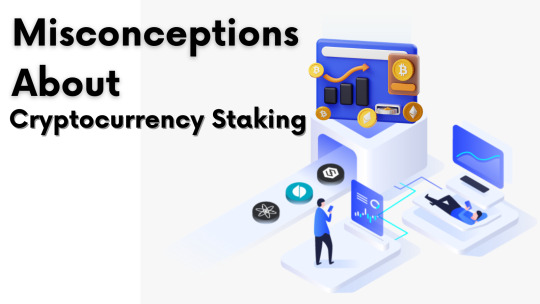
Are you a crypto investor? Then, you must be aware of the term ‘staking.’ Similar to yield farming, staking is one of the methods of earning passive income from cryptocurrency. It allows users to administrate the crypto ecosystem. However, there a still a few misconceptions about crypto staking that should be changed as soon as possible. Let us explain!
Misconception #1- You need more money to do staking
If you don’t know already, a trader should have a minimum of 32 ETH to be nominated as a validator in Eth2.0. Also, becoming a validator isn’t so easy. You will require dedicated hardware with an industry-level internet connection. That is why many users will choose a third-party staking-as-a-service provider connecting their wallet to the staking pool directly.
Misconception #2- Yields are constant and uniform
Depending on the staking pool, your outcomes will vary. The pool operator and the validators will charge a commission that differs based on the pool you choose. Some will have high rewards, while others will have lower ones.
Moreover, the quality of the staking pool also matters. Your crypto performance will decrease if your chosen system doesn’t have proper validators. So, you must cross-check the reputation of the staking pool before deploying your coins.
Misconception #3- You need exemplary skills
There are many points of entry in staking your cryptocurrency. However, you need not bear all the pressure on yourself. Instead, you can simply hand over the work to either an exchange or a staking-as-a-service platform.
Entry points:-
Becoming a validator
Using an exchange to handle the tech side
Getting help from a staking-as-a-service platform to connect your wallet to the staking pool
Apart from the first option, the other two were so common. As a staking-as-a-service platform will have high-level skill and hardware, it will take care of the staking process on behalf of the user.
On the other hand, using an exchange platform will allow you to deposit crypto for staking. For that, the platform will charge a certain amount as a service fee. Alternatively, you can get the assistance of a blockchain expert to develop your exchange using the best cryptocurrency exchange development services.
Misconception #4- Staking does not vary between cryptocurrencies
Let us explain this misconception with this example. We have several Proof-of-Stake (PoS) blockchains in the crypto market, such as Ethereum 2.0, Polkadot, and Cardano. Even though all these blockchains have the same consensus mechanism, the staking rewards they offer will not be the same.
Finally, we conclude with the hope that you have got some useful information about top misconceptions about staking.
0 notes
Text
Opensea熊市密密造車|連環更新誓要對NFT市場「大改造」
熊市造車,牛市才可以狂飄。ETH2.0的熱潮過後,幣圈和NFT世界情況繼續不容樂觀,不過儘管如此,我們還是看得到NFT世界的基建正在慢慢完善,為新一輪的牛市做好準備。
近日,全世界最大的NFT二手平台Opensea就發表了一系列的頁面改革,並引入不同新功能,今日就跟大家仔細分析一下。
首先,是首頁改革。Opensea終於慢慢懂得運用他們的首頁,改革之後,最頂部會有NFT的大型展示窗口,相信是Opensea的廣告窗口,將會為其增加廣告競爭力。
往下看,會發現NFT排行榜,其中Top…
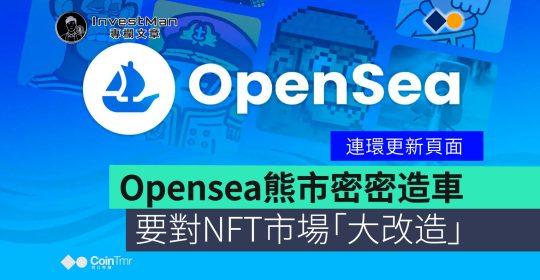
View On WordPress
0 notes
Text
Powerful 1st Ethereum Merge, What is it?
Powerful 1st Ethereum Merge, What is it?
1st Ethereum Merge what is it?
The Ethereum Merge is a large part of the Ethereum vision, a series of planned upgrades that are planned to be mostly finished by 2024. These upgrades were previously known as ETH2.0 but were renamed to The Merge. This event is the second of a three-step process of upgrades. The first upgrade added the beacon chain, which is currently a testing tent for the Ethereum…
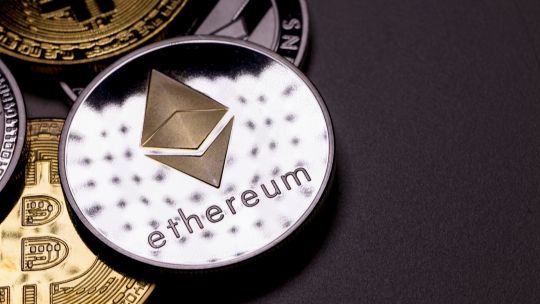
View On WordPress
0 notes
Text
Crypto Scams
Not the 1inch you need"1inch.cz", "test.1inch.airdrop.live",
Not the Ronin wallet you need"6vvvroninwallet.top", "6vvwvroninwallet.top", "6wvvroninwallet.top",
Not the Coinbase you need"account-coinbase.thepastgold.com", "account-coinbasee.com", "coinbase-authenticator.com", "coinbase-authorized-recent.com", "coinbase-authset.myftp.org", "coinbase-review-updateds.com", "coinbase-supportredit-carmail.thuongnhanv.admin.orderonline.id", "coinbase.com.nfcwallet.us", "coinbaseassist.duckdns.org", "coinbaseinvestbank.finance.blog", "coinbasenft.ownbitcoins.net", "coinbaseprosupport.com", "coinbasesupport-number.ownwebsite.com", "coinbasesupport.duckdns.org", "coinbasewallet-btc.cc", "logaccount-coinbase.3utilities.com", "login-coinbase.accountsignin.jalkoy.net", "login.account-coinbasee.com", "login.coinbase.oauthdashboard.com", "recovery-coinbase.support", "secure-id-verification-coinbase.com", "verification-secure-coinbase.com",
Not the Binance you need"binanceairdrop.com", "binanceairdrop.info", "binancecenter.xyz",
Not the KlaySwap you need"app-klayswap.ga", "app-klayswap.gq", "app-klayswap.cf", "app-klayswap.ml", "app-klayswap.tk",
Not the Ethereum you need"1xshortethereumtoken.pages.dev", "a.ethereuming.top", "ethereuming.top", "ethereum-gala.com", "ethereum-just.com", "ethereum-uniswap.com", "ethereum-upgrade.com", "ethereum-usdc.com", "ethereum-v2.me", "ethereum.jetzt", "ethereum.kim", "ethereum.la", "ethereum6.me", "ethereum6.vip", "ethereum6.xyz", "ethereumcheat.pages.dev", "posta.coin-ethereums.com", "usdt-tethereum.com", "web5ethereum.com",
Not the "Airdrop", "Elon Musk" or "Vitalik" you need"airdrop-looksrare.com", "airdrop-olympusdao.finance", "airdrop-starnodes.finance", "airdrop-thephoenix.finance", "airdrop.fund", "airdrop98.finance", "airdropfindx.finance", "airdropofficial7.vercel.app", "musk.airdrop.fund", "vitalik-eth2.0.netlify.app", "vitaliks.xyz",
Not the OlympusDAO you need"airdrop-olympusdao.finance",
Not the LooksRare you need"airdrop-looksrare.com", "claim-looksrare.net",
Not the CryptoCom you need"coincryptocom.tk", "coincryptocorp.tk", "donate.coincryptocom.tk", "donate.coincryptocorp.tk", "unlock-crypto.com.serviziofin.online",
Not the MetaMask you need"accouhtmetamask.online", "acountmetamask.online", "auth-metamask.co", "auth-metamask.io", "blog-metamask.com", "blog-metamask.io", "crypto-metamask-verifyprocess.com", "howtoinstallmetamask.buzz", "https-metamask.ddns.net", "metamask-apk.monster", "metamask-blog.com", "metamask-now.top", "metamask-usd.top", "metamask.brave-nobel.66-29-152-189.plesk.page", "metamask.confident-gagarin.66-29-130-169.plesk.page", "metamask.directoverboeken.ink", "metamask.freefaucet.com.tc", "metamask.intelligent-kilby.66-29-130-169.plesk.page", "metamask.simplechex.com", "metamask2.net", "metamaskaa.io", "metamaskab.io", "metamaskbak.cc", "metamaskbet.com", "metamaskdesk.com", "metamaskethereum.monster", "metamaskinstallchrome.shop", "metamaskipn.com", "metamasklaqin.online", "metamaskloqin.online", "metamasks.live", "metamaskusdt.com", "metamaskusdt.net", "metamaskusdt.org", "wwwmetamask.com", "securemail.metamask.cglgc.com", "cglgc.com", "walet-metamask.online", "waletmetamask.online", "wallet-metamask.online", "verify-metamask.simplechex.com", "verify.auth-metamask.co", "verify.auth-metamask.io",
Not the Metaverse you need"accountmetalives.tk", "metabankfi.xyz", "metabanknft.xyz", "metacryptowallet.co", "metasupporthelpform.ml", "metaversalbitcoin.xyz", "metaverseaccounting.xyz", "metaverseblockchainwallet.com", "accountresolution.top",
Not the Avax you need"avaxswap.xyz",
Not the PancakeSwap you need"affiliate.pancakesvqp.com", "forum.pancokeswap.com", "loglnpancakeiwaps.xyz", "pancakesvap.org", "pancakesvap.space", "pancakesvap.tokenspace.finance", "pancakeswap-finance.miotmedical.com.fj", "pancakeswap-os.com", "pancakeswap.finance.fijivisitorsinsurance.com.fj", "pancakeswap.ru", "pancakeswapco.com", "pancakeswapexcng.com", "pancakeswvop.com", "pancakeswzp.com", "portal.pancakesvqp.com", "server1.pancakesvqp.com", "td34hiwuoyrvv1y.www.demo.pancakeswaps.it", "webpancakeswap-app.com",
Not the UniSwap you need"ads.uniswape.me", "app.uniswap.claims", "app.uniswap.gl", "unicrypto.xyz", "uniswap-nft.com", "uniswap.gl", "uniswap.software", "uniswapcoin.top", "uniswape.me", "uniswapexchange.org", "uniswapexchange.pro", "uniswapop.com", "uniswappro.llc", "uniswappro.online", "daili.uniswape.me",
Not the Kraken you need"gotokraken.com", "kraken-tf.xyz",
Not the TrustWallet you need"trust-wallet-airdrop.tk", "trusted-protection.xyz", "trusted-protocol.xyz", "trustwallet-confirmation.xyz", "trustwallet-recover.xyz", "trustwallet-recover12.info", "trustwallet-recover12.xyz", "trustwallet-recovery.info", "trustwallet-verify.xyz",
Not the MEW you need"myetherwallet.com-2r5n.14-71.site", "myetherwalletru.com", "mywallet-support.ml",
Not the WalletConnect you need"dapp-cryptovalidaton.top", "dapp-cryptovalidaton.icu",
Not the crypto "LegitPayBot," "Mafia Bank", "crypto doubler" nor "crypto investment platform" you need"advancecrypto.xyz", "auth.projectmoon.ga", "crypto-doubler.tk", "crypto-investors.xyz", "crypto6x.tk", "cryptobusiness.tk", "mafia-bank.xyz", "othersidepayment.xyz", "projectmoon.ga", "usdcoinfaucet.xyz", "usdt.legitpaybot.top", "legitpaybot.top", "walletofficial-websit.xyz",
Not the Web3 (or "Web5") you need (cheap cybersquatting .xyz domains)"web3banks.xyz", "web3blockchain.xyz", "web3claims.xyz", "web3creditscore.xyz", "web3creditscores.xyz", "web3giveaways.xyz", "web5accounting.xyz", "web5authority.xyz", "webblockchain.xyz", "whatsinmycryptowallet.com", "api":
0 notes
Text
On September 19, the total value staked in Ethereum 2.0 contracts crossed 30 million ETH for the first time since. On-chain data reveals the Fed rate pause announcement may have triggered the bullish response among Ethereum investors. Here’s how Ethereum’s price could react in the mid to long-term.
Ethereum’s week-long price rally slowed Wednesday as ETH spot market traders sought to book early profits after the much-anticipated Fed Rate pause announcement. But behind the scenes, Ethereum long-term investors ramped up ETH 2.0, Staking by another $126 million.
Total Deposits in Ethereum 2.0 Staking Contracts Crossed 30 Million ETH
Ethereum staking deposits spiked ahead of the recent Fed Meeting, bringing the total value staked in ETH2.0 contracts to 30 million ETH. This is the first time Ethereum staking has reached this milestone since the landmark transition to Proof of Stake (PoS) consensus.
According to the on-chain data compiled by Glassnode, Ethereum long-term investors have deposited 856,709 ETH in September so far to reach the 30 million milestone.
As shown below, the ETH 2.0 Total Value Staked stood at 29.23 million ETH as of August 31. At the close of September 20, the balance had increased to 30.09 million ETH.
ETH Total Value Staked – Source: Glassnode
Glassnode’s Total Value Staked metric tracks the amount of Ethereum coins deposited to the ETH2.0 staking contract. An increase in staking deposits primarily improves the security of Proof of Stake consensus protocols.
But more than that, it implies that network participants are growing confident in Ethereum’s long-term viability.
This 30 million ETH milestone means more than $48.6 billion worth of value is now locked up on the Ethereum Beacon Chain. Notably, it also means that more than 25% of the 120,227,795 ETH total circulation supply of 120.2 million is now locked up in smart contraction.
Locking up 25% of the market supply could potentially speed up the Ethereum price upswing during the next bull rally.
The Fed Rate Pause Accelerated Staking Deposits
Ethereum’s week-long price rally slowed Wednesday as ETH spot market traders booked early profits after the much-anticipated Fed Rate pause announcement.
But behind the scenes, as the yield on risk-free US government bonds remains unchanged, Ethereum whale investors opted to ramp up ETH 2.0 staking by another 77,800ETH worth approximately $126 million.
The chart below illustrates how the net change in ETH 2.0 staking deposits began to rise around September 17, just days before the US Fed confirmed the rate pause.
Beacon Chain Deposits vs Withdrawals | Source: TheBlock
Notably, ETH 2.0 staking withdrawals were enabled on April 12 with the launch of the Shapella upgrade. Since then, the net-change values have provided clear insights into the staking dynamic by weighing daily deposits against withdrawals.
Also, the 32 ETH ($52,000) entry requirement means that most staking participants are large institutional entities and high-networth crypto whales. Hence, this increase in staking means they consider the yield earned from ETH 2.0 staking highly competitive relative to alternative TradFi asset classes.
This could boost the retail investors’ confidence and trigger an Ethereum price upswing in the mid to long term.
ETH Price Prediction: The Bulls Could Push For $3,000 During the Next Bull Rally
The last time the Ethereum price hit $2,000 was on July 14, 2023. But notably, since then, 3.5 million ETH coins have been removed from circulation and staked in ETH 2.0 contracts.
Albeit temporary, this drop in market supply could propel Ethereum’s price toward $3,000 if it attracts a similar level of demand.
The In/Out of Money Around Price data, which depicts the purchase price distribution of current ETH holders, also validates this bullish stance.
It shows that if Ethereum scales the $2,100 obstacle, the bulls will face significantly less resistance on the road to $3,000.
As shown below, the 9.06 million addresses bought 37.
15 million ETH at the average price of $2,160 is the largest cluster of ETH holders. But if the ETH 2.0 staking continues to soar above 30 million coins, the Ethereum price rally will likely hit $3,000.
Ethereum IOMAP data. Sept 2023. Source: IntoTheBlock
Conversely, the bears could seize control if the ETH price drops below $1,500. However, as shown below, 3.72 million addresses had bought 7.6 million Ethereum at the minimum price of $1,526. If they opt to cover their positions rather than sell, the ETH price could rebound.
But if the ETH loses that vital support level, the price could drop toward $1,400.
Source
0 notes
Text
Coinbase ra mắt token staking ETH2.0 trước thềm The Merge
Coinbase ra mắt token staking ETH2.0 trước thềm The Merge
Bất chấp các cuộc điều tra từ Ủy ban Chứng khoán và Giao dịch Hoa Kỳ (SEC), Coinbase thông báo ra mắt token staking ETH2.0.
Coinbase ra mắt token staking ETH2.0 trước thềm The Merge
Trong thông báo tối qua, Coinbase cho biết sẽ niêm yết Coinbase Wrapped Staked ETH (cbETH) dưới dạng token ERC-20, cho phép khách hàng sử dụng Ether (ETH) đã staking trong khi vẫn kiếm được phần thưởng trên sàn giao…
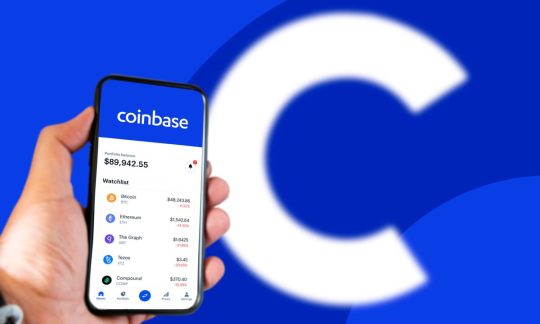
View On WordPress
#Bảo mật#Coinbase#crypto#Cryptocurrency#ETH20#mã nguồn#mắt#Merge#staking#Thêm#tiền ảo#tiền kỹ thuật số#tiền thuật toán#token#trước#utility
1 note
·
View note
Text
Coinbase ra mắt token staking ETH2.0 trước thềm The Merge
Coinbase ra mắt token staking ETH2.0 trước thềm The Merge
Bất chấp các cuộc điều tra từ Ủy ban Chứng khoán và Giao dịch Hoa Kỳ (SEC), Coinbase thông báo ra mắt token staking ETH2.0.
Coinbase ra mắt token staking ETH2.0 trước thềm The Merge
Trong thông báo tối qua, Coinbase cho biết sẽ niêm yết Coinbase Wrapped Staked ETH (cbETH) dưới dạng token ERC-20, cho phép khách hàng sử dụng Ether (ETH) đã staking trong khi vẫn kiếm được phần thưởng trên sàn giao…
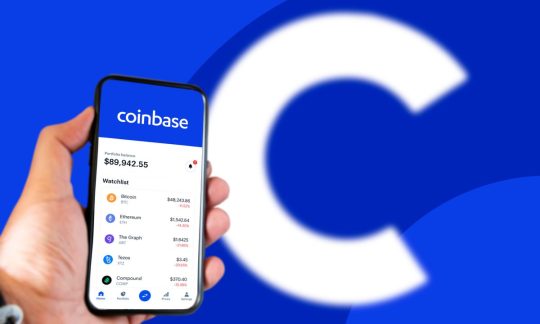
View On WordPress
0 notes

